新着情報 News
-
 2025.10.29 セミナー情報
2025.10.29 セミナー情報岡山大学 麻酔科蘇生科 秋セミナー 2025
-
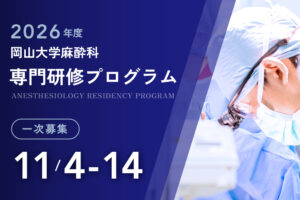 2025.10.29 募集について
2025.10.29 募集について2026年度 専攻医募集開始
-
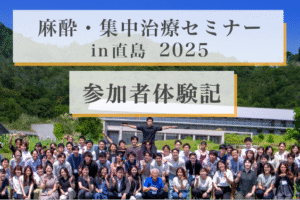 2025.9.25 セミナー情報活動報告
2025.9.25 セミナー情報活動報告麻酔・集中治療セミナー2025in直島 参加者体験記
-
2025.8.12 Publication
A new acute pain service fee addition in Japan: a nationwide study based on a reimbursement claims database
-
2025.8.12 Publication
Stellate ganglion light irradiation to enhance vasodilation in arteriovenous fistula creation for hemodialysis
-
 2025.6.5 セミナー情報
2025.6.5 セミナー情報【受付終了】麻酔・集中治療セミナー In 直島2025
-
 2025.4.24 セミナー情報
2025.4.24 セミナー情報受付終了【5/30】岡山大学麻酔科 春の医局説明会 参加者募集
-
2025.4.6 教授からのお知らせ活動報告
IARS2025報告
-
2025.4.6 教授からのお知らせ活動報告
SCCM2025報告
-
 2025.2.18 セミナー情報
2025.2.18 セミナー情報岡山大学麻酔科冬セミナー参加者募集
-
2025.2.16 お知らせセミナー情報
2025年2月28日冬セミナー開催します。
-
2024.12.20 Publication教授からのお知らせ
金先生 PENG Block
-
2024.12.20 Publication教授からのお知らせ
佐倉先生 Free Hb AKI
-
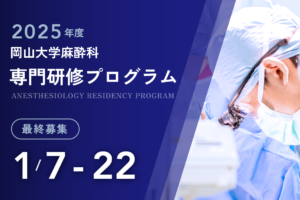 2024.10.31 募集について
2024.10.31 募集について2025年度専攻医募集開始
-
2024.10.26 セミナー情報
11月29日秋セミナー開催します。
-
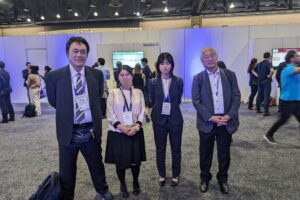 2024.10.25 教授からのお知らせ活動報告
2024.10.25 教授からのお知らせ活動報告ASA 2024 in Philadelphia
-
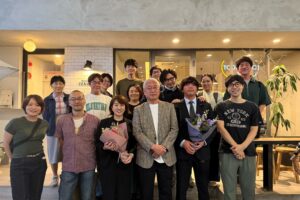 2024.9.27 教授からのお知らせ
2024.9.27 教授からのお知らせ壮行会
-
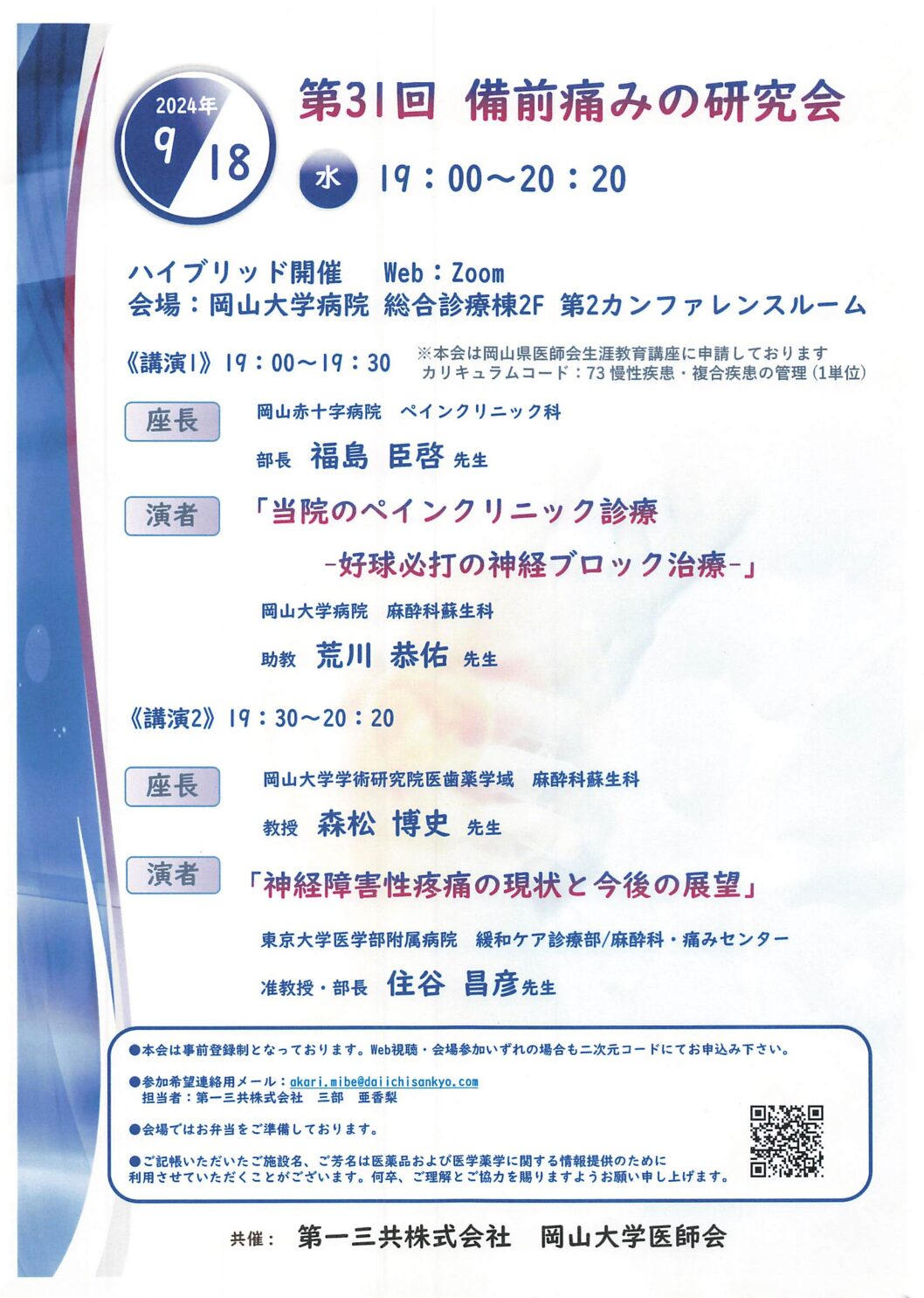 2024.9.6 セミナー情報
2024.9.6 セミナー情報2024年9月18日備前痛みの研究会
-
 2024.9.5 活動報告
2024.9.5 活動報告麻酔・集中治療セミナー2024in直島 参加者体験記
-
 2024.9.4 活動報告
2024.9.4 活動報告直島セミナー
-
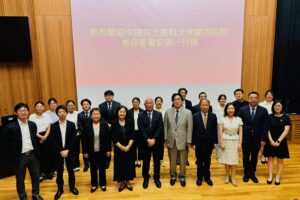 2024.8.20 活動報告
2024.8.20 活動報告河北医科大学ー岡山大学セミナー2024
-
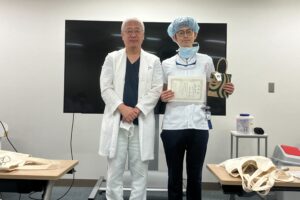 2024.6.28 教授からのお知らせ
2024.6.28 教授からのお知らせ教授賞臨床部門初期研修医麻酔件数一位
-
 2024.6.26 セミナー情報教授からのお知らせ
2024.6.26 セミナー情報教授からのお知らせ鴨川セミナー
-
 2024.6.24 教授からのお知らせ活動報告
2024.6.24 教授からのお知らせ活動報告IARS参加報告
-
2024.6.7 教授からのお知らせ
PhD students’ Camp
-
2024.6.7 教授からのお知らせ
PhD students’ Camp
-
 2024.6.6 セミナー情報
2024.6.6 セミナー情報【受付終了】麻酔・集中治療セミナー In 直島 2024
-
 2024.5.7 セミナー情報
2024.5.7 セミナー情報岡山大学麻酔科 春の医局説明会 参加者募集
-
 2024.5.4 教授からのお知らせ
2024.5.4 教授からのお知らせ花
-
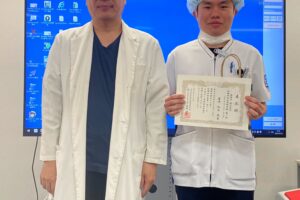 2024.4.26 教授からのお知らせ
2024.4.26 教授からのお知らせ教授賞 臨床部門 初期研修医麻酔件数1位
-
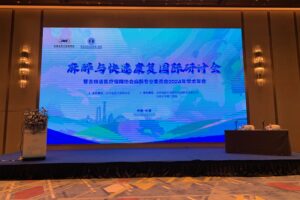 2024.4.26 教授からのお知らせ
2024.4.26 教授からのお知らせ長春訪問
-
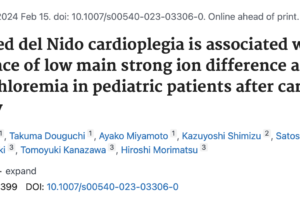 2024.3.20 教授からのお知らせ
2024.3.20 教授からのお知らせModified del Nido cardioplegia is associated with low incidence of low main strong ion difference and hyperchloremia in pediatric patients after cardiac surgery.
-
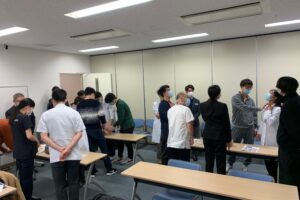 2024.2.26 教授からのお知らせ
2024.2.26 教授からのお知らせ冬セミナー2024
-
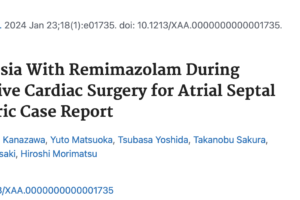 2024.2.4 教授からのお知らせ
2024.2.4 教授からのお知らせGeneral Anesthesia With Remimazolam During Minimally Invasive Cardiac Surgery for Atrial Septal Defect: A Pediatric Case Report.
-
 2023.12.25 セミナー情報
2023.12.25 セミナー情報岡山大学麻酔科冬セミナー参加者募集
-
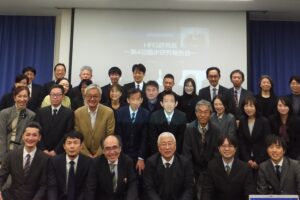 2023.12.25 教授からのお知らせ
2023.12.25 教授からのお知らせHRG研究報告会
-
 2023.12.5 活動報告
2023.12.5 活動報告第29回備前痛み治療研究会の参加報告
-
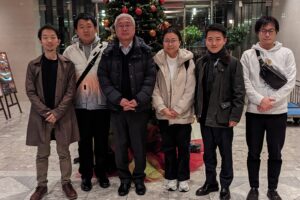 2023.12.3 教授からのお知らせ
2023.12.3 教授からのお知らせKojima Camp
-
 2023.11.29 活動報告
2023.11.29 活動報告Paul Kessler先生 講演会報告 @岡山大学病院
-
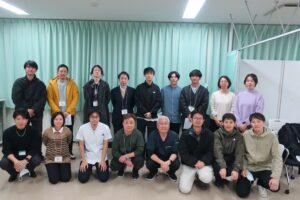 2023.11.19 教授からのお知らせ
2023.11.19 教授からのお知らせ術中呼吸管理セミナーを行いました。
-
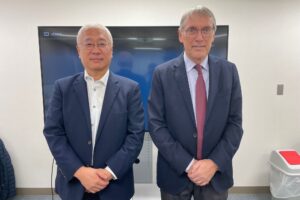 2023.11.18 教授からのお知らせ
2023.11.18 教授からのお知らせKessler先生が来てくれました。
-
 2023.11.3 教授からのお知らせ
2023.11.3 教授からのお知らせStroke volume variation and dynamic arterial elastance predict fluid responsiveness even in thoracoscopic esophagectomy: a prospective observational study
-
 2023.11.1 教授からのお知らせ
2023.11.1 教授からのお知らせデジタルヘルス人材育成プログラム
-
 2023.10.24 活動報告
2023.10.24 活動報告日本小児麻酔学会第28回大会 参加報告
-
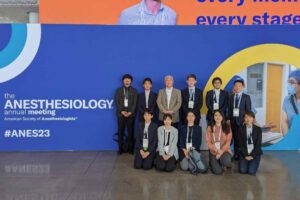 2023.10.20 教授からのお知らせ
2023.10.20 教授からのお知らせASA 2023
-
 2023.10.17 活動報告
2023.10.17 活動報告直島セミナー2023の参加者の体験記
-
 2023.9.24 教授からのお知らせ
2023.9.24 教授からのお知らせCSA2023に参加しました。付さんと任さんにも会えました。
-
 2023.9.17 教授からのお知らせ
2023.9.17 教授からのお知らせ留学生Farewell Party
-
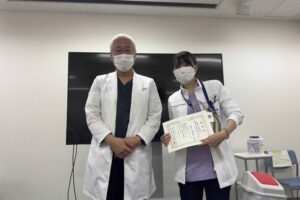 2023.8.31 教授からのお知らせ
2023.8.31 教授からのお知らせ教授賞
-
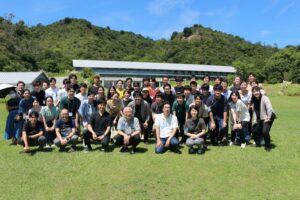 2023.8.31 教授からのお知らせ
2023.8.31 教授からのお知らせ直島セミナー2023
-
 2023.8.18 教授からのお知らせ
2023.8.18 教授からのお知らせAbility of the integrated pulmonary index to predict impending respiratory events in the early postoperative period
-
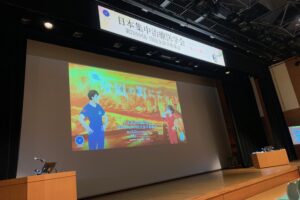 2023.7.31 教授からのお知らせ
2023.7.31 教授からのお知らせ日本集中治療医学会中国四国支部会
-
 2023.7.17 教授からのお知らせ
2023.7.17 教授からのお知らせペインクリニック学会
-
 2023.6.28 お知らせセミナー情報
2023.6.28 お知らせセミナー情報【受付終了】麻酔・集中治療セミナー In直島 2023
-
 2023.6.25 活動報告
2023.6.25 活動報告鴨川セミナー報告2
-
 2023.6.24 活動報告
2023.6.24 活動報告鴨川セミナー報告
-
 2023.6.21 セミナー情報
2023.6.21 セミナー情報直島セミナー開催予定
-
 2023.6.10 教授からのお知らせ
2023.6.10 教授からのお知らせKAMEDA麻酔・集中治療セミナー2023
-
 2023.6.9 教授からのお知らせ
2023.6.9 教授からのお知らせ日本麻酔科学会
-
 2023.6.9 教授からのお知らせ
2023.6.9 教授からのお知らせMAP seminar report
-
 2023.5.25 教授からのお知らせ
2023.5.25 教授からのお知らせDexmedetomidine improves acute lung injury by activating autophagy in a rat hemorrhagic shock and resuscitation model
-
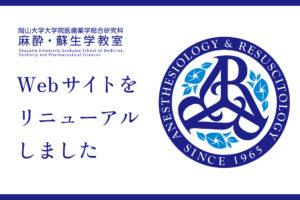 2023.5.25 お知らせ
2023.5.25 お知らせホームページをリニューアルしました。




